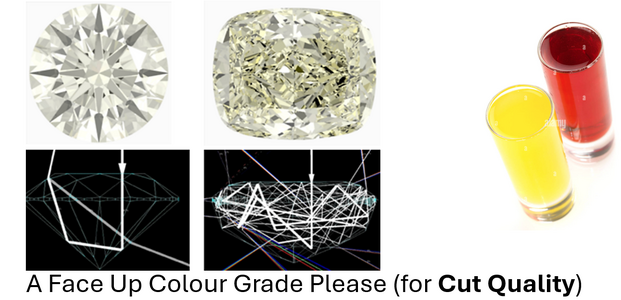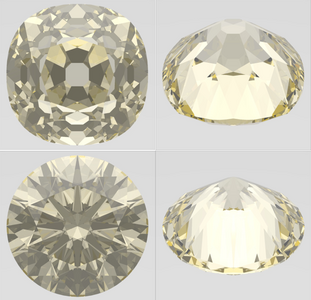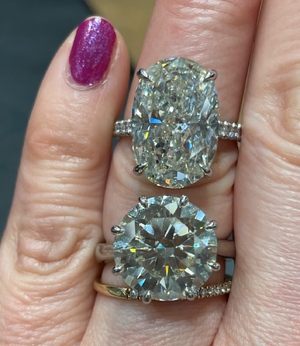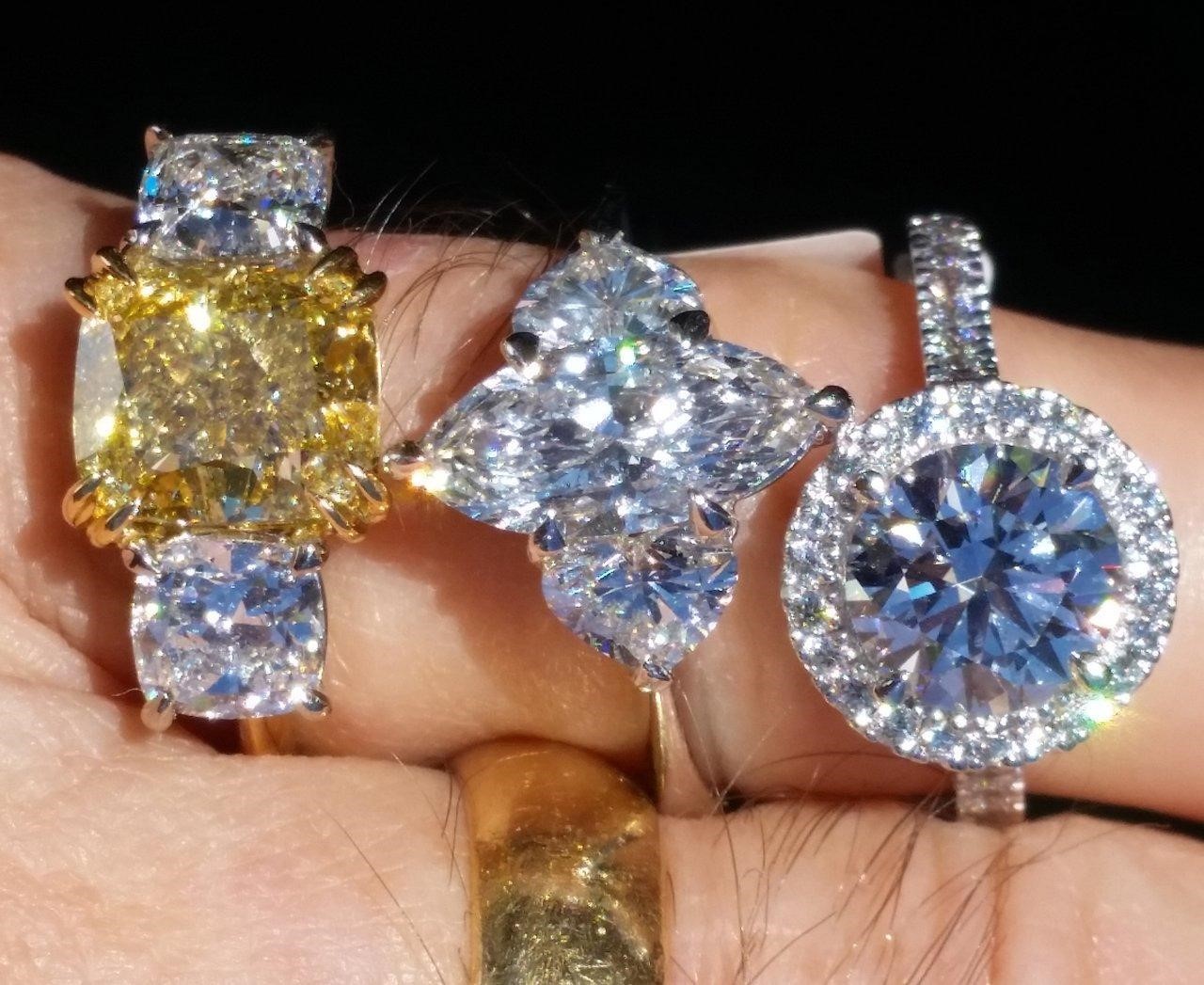lulu_ma
Ideal_Rock
- Joined
- Sep 9, 2020
- Messages
- 5,069
Yes and NO! Depending on cut quality - the shorter the ray paths through a diamond the less color will be seem face up.
Perfect rounds have very short ray paths, averaging around 2.5 time diameter.
Diamonds cut to increase color have three time avg ray path lengths.
Most fancy shapes have poor light return and so they show lower colors.
The round and cushion shown are digital and have identical material color!

I’m going to piggy back off SH’s question-why did so many old cut diamonds have face ups whiter than grade?
I’d love to know the science behind this phenomena.








300x240.png)